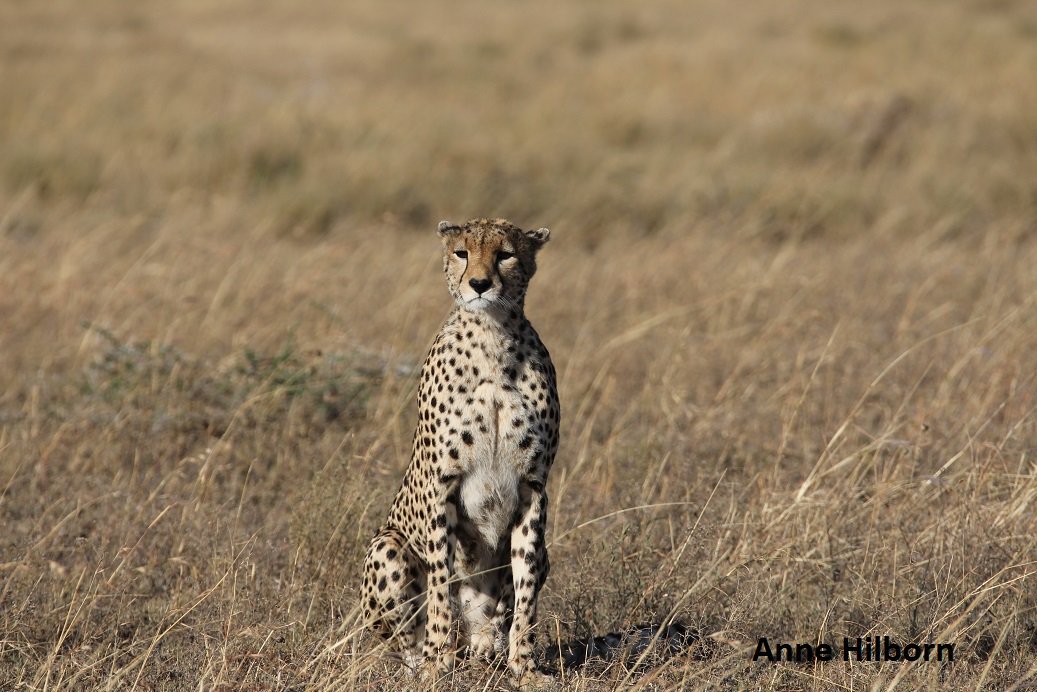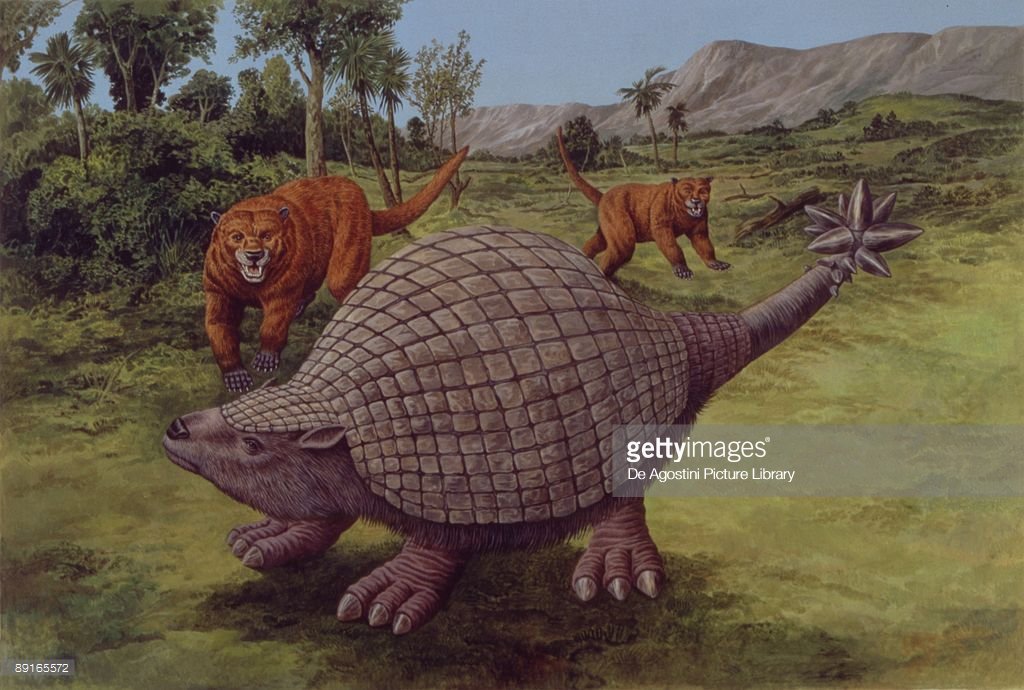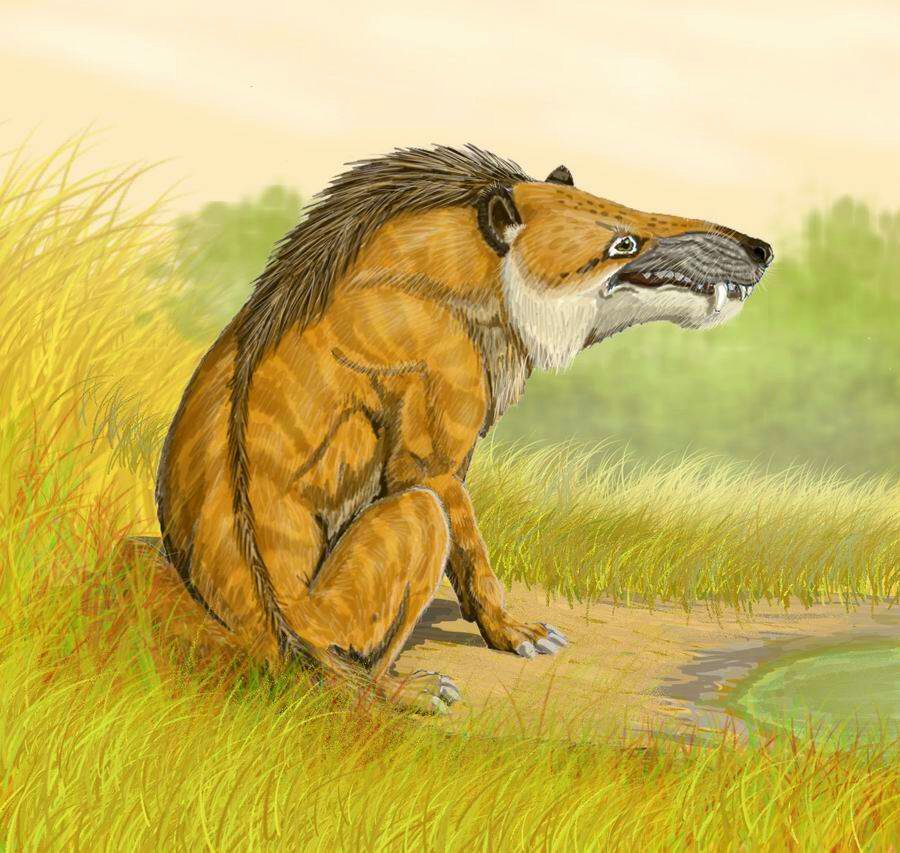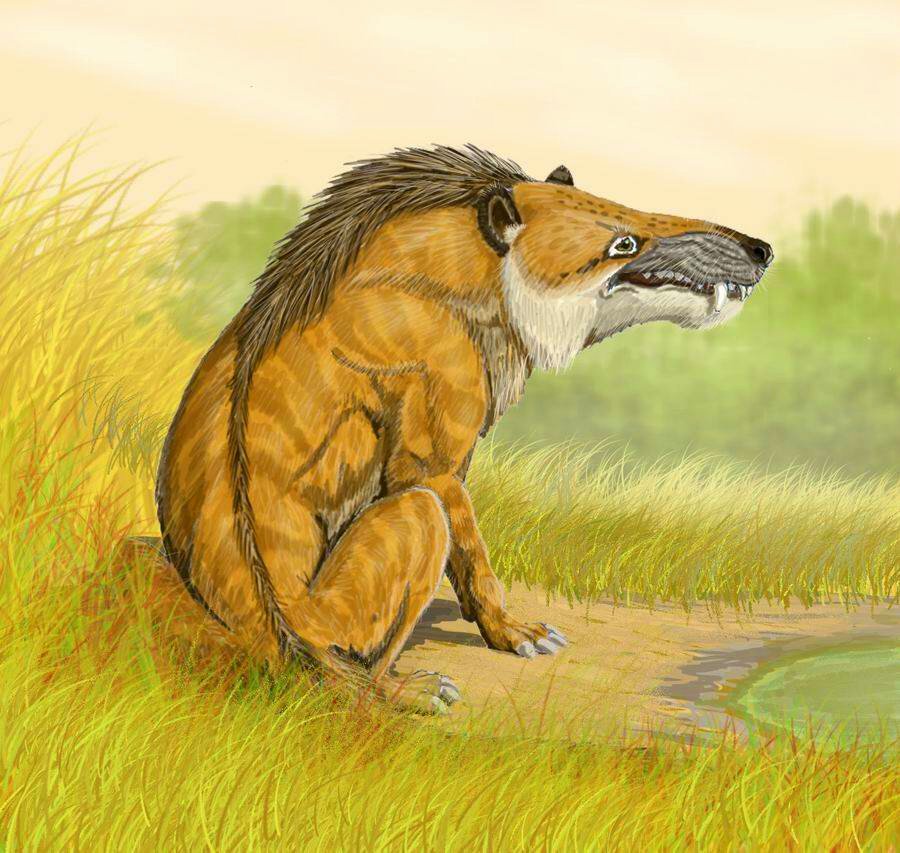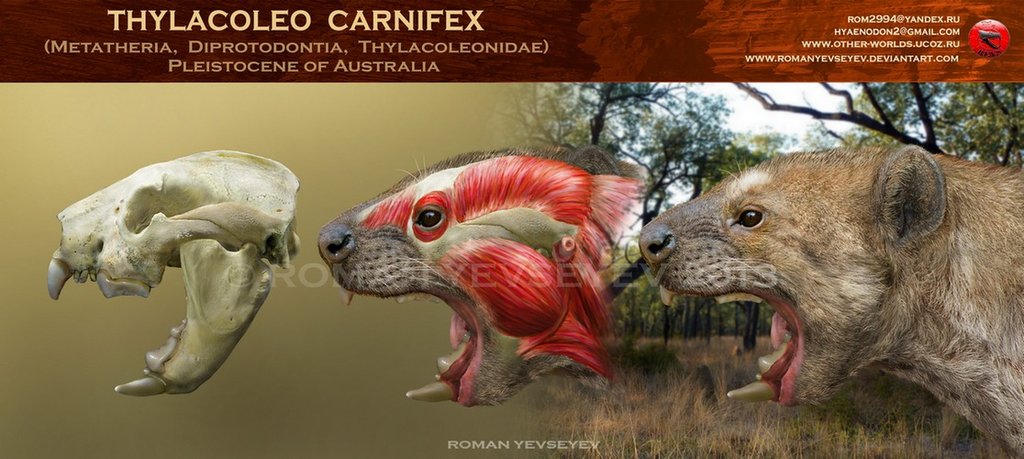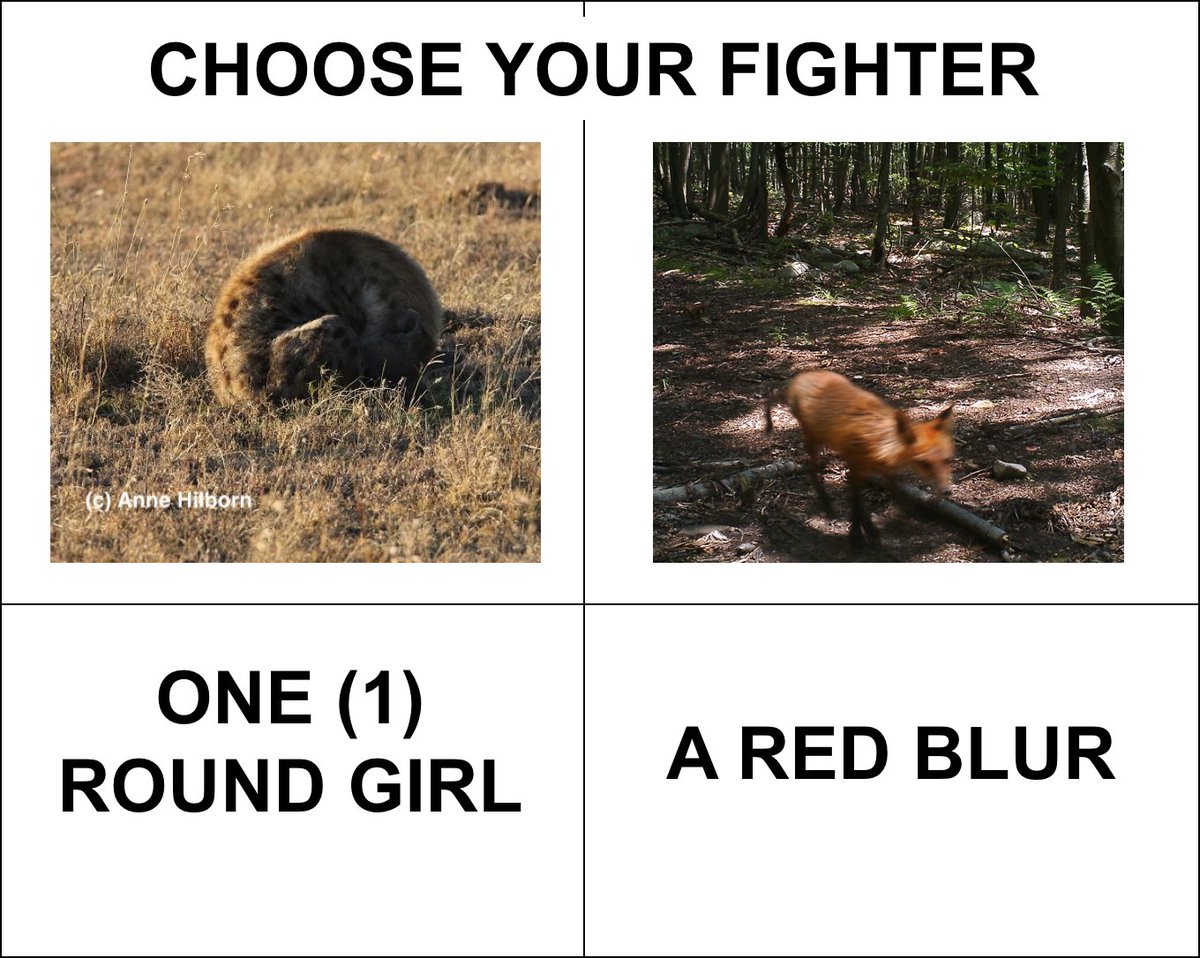NEXT UP: #4 seed Andrewsarchus mongoliensis vs #13 seed Nuralagus rex! #2018MMM
Not much is known about A. mongoliensis because the only evidence we have of their existence is one massive, 3-foot long skull with enormous teeth (see quoted tweet). We know that they lived in Inner Mongolia about 45 mya. #2018MMM
External Tweet loading...
If nothing shows, it may have been deleted
by @iDigBio view original on Twitter
Here’s a picture of what A. mongoliensis might have looked like (credit: Bogdanov 2006) #2018MMM 
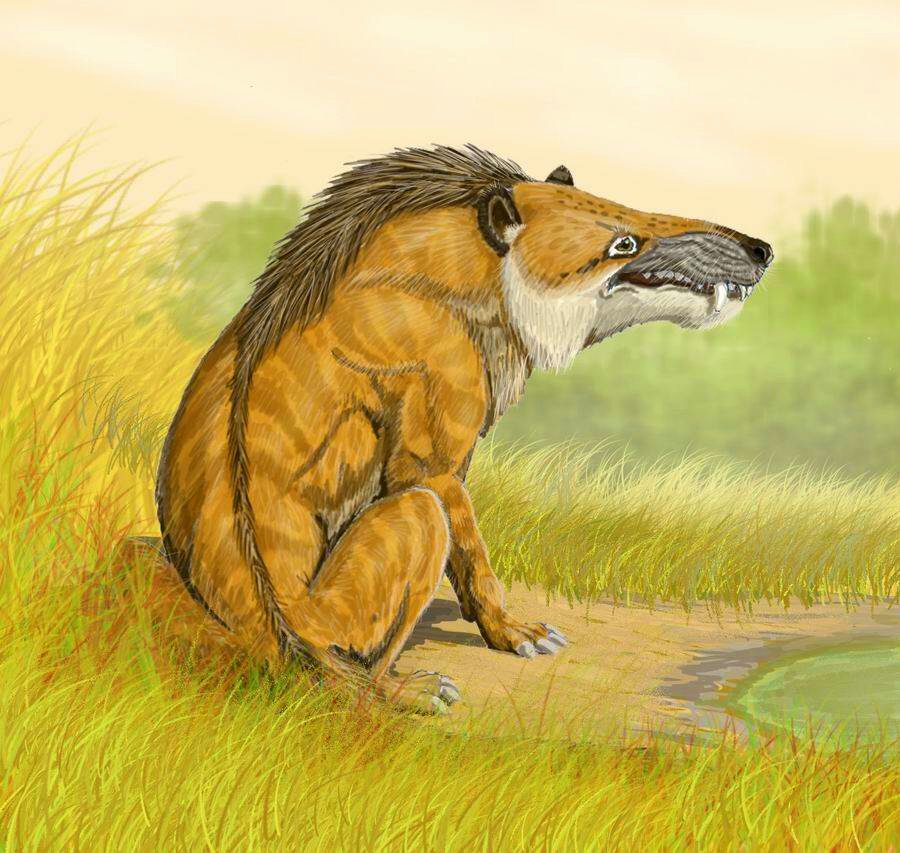
Based on the skull and closely related species, scientists believe A. mongoliensis was almost 5 feet high (7 stoats) and could have weighed up to 1,000 kg (4,500 stoats). Its head was 2.5 stoats long! #2018MMM #StoatsAsMeasurement
Aside: although it was a thicc boi, built like a brickhouse, much like my favorite dark space prince son, A. mongoliensis likely had a hump to balance out its giant head. Meanwhile, Kylo is perfectly proportioned (credit: dark-side-of-everything.tumblr.com/post/171877313…). #2018MMM
TPTB wanted me to mention Kylo for some reason.
Ahem.
Either way, we think that A. mongoliensis was closely related to hippos and whales. So just imagine this happening, but on land. #2018MMM
Ahem.
Either way, we think that A. mongoliensis was closely related to hippos and whales. So just imagine this happening, but on land. #2018MMM
So, what is this competitor that will be taking on A. mongoliensis?
Well, it’s a giant rabbit, but without the rabbit benefits. 😐 #2018MMM
Well, it’s a giant rabbit, but without the rabbit benefits. 😐 #2018MMM
N. rex lived in the middle of the Mediterranean, on the island of Menorca, from 7 to 3 mya. It eventually went extinct, possibly due to a goat-like species colonizing the island. 🐐 vs 🐇 #2018MMM
N. rex was a BIG bunny. It was 1.5 feet high (2 stoats) and 26 pounds (53 stoats). Here’s a depiction of what it might’ve looked like by @paleofan for newdinosaurs.com (here's there site: ntamura.deviantart.com). #2018MMM #StoatsAsMeasurement 
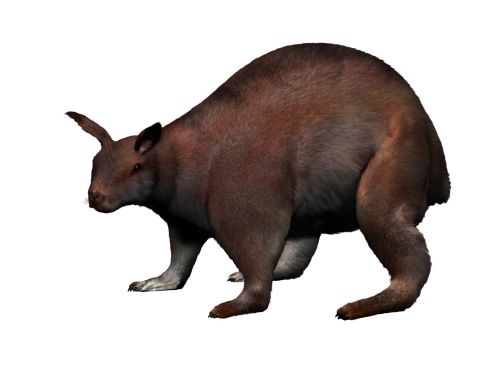
N. rex didn’t have the large eyes & floppy ears of today’s bunnies, which are useful for things other than looking cute (mainly, predator detection). And it couldn’t hop. It didn’t need to since it had no predators. #2018MMM
Unfortunately, that’s all about to change. #2018MMM
Tonight’s battle takes place in a humid forest in Inner Mongolia, 40 mya. N. rex is used to open scrubland, but it starts moseying along.
Digs in the soil for delicious roots and tubers.
Unaware that
something
is
watching it. #2018MMM
Digs in the soil for delicious roots and tubers.
Unaware that
something
is
watching it. #2018MMM
A. mongoliensis, which might have eaten turtles & molluscs with those heavy jaws, is a bit confused at the appearance of this round thing in its home environment.
Is it food?
A. mongoliensis creeps closer. #2018MMM
Is it food?
A. mongoliensis creeps closer. #2018MMM
N. rex continues digging for food. It can’t hear the heavy A. mongoliensis walking towards it. Doesn’t notice the larger animal until it’s right on it. #2018MMM
N. rex isn’t sure what to think of the larger animal. It has no experience with predators.
A. mongoliensis isn’t sure what to think of the smaller animal.
It’s a confused stare-off! #2018MMM
A. mongoliensis isn’t sure what to think of the smaller animal.
It’s a confused stare-off! #2018MMM
That is, until A. mongoliensis tests the ‘food-or-not’ hypothesis the only way it knows how: with its mouth. Its heavy jaws close around N. rex’s ribs, and although the bite is gentle, it crushes the pre-bunny’s bones. #2018MMM
ANDREWSARCHUS MONGOLIENSIS CRUNCHES NURALAGUS REX!!!!!! #2018MMM
• • •
Missing some Tweet in this thread? You can try to
force a refresh



